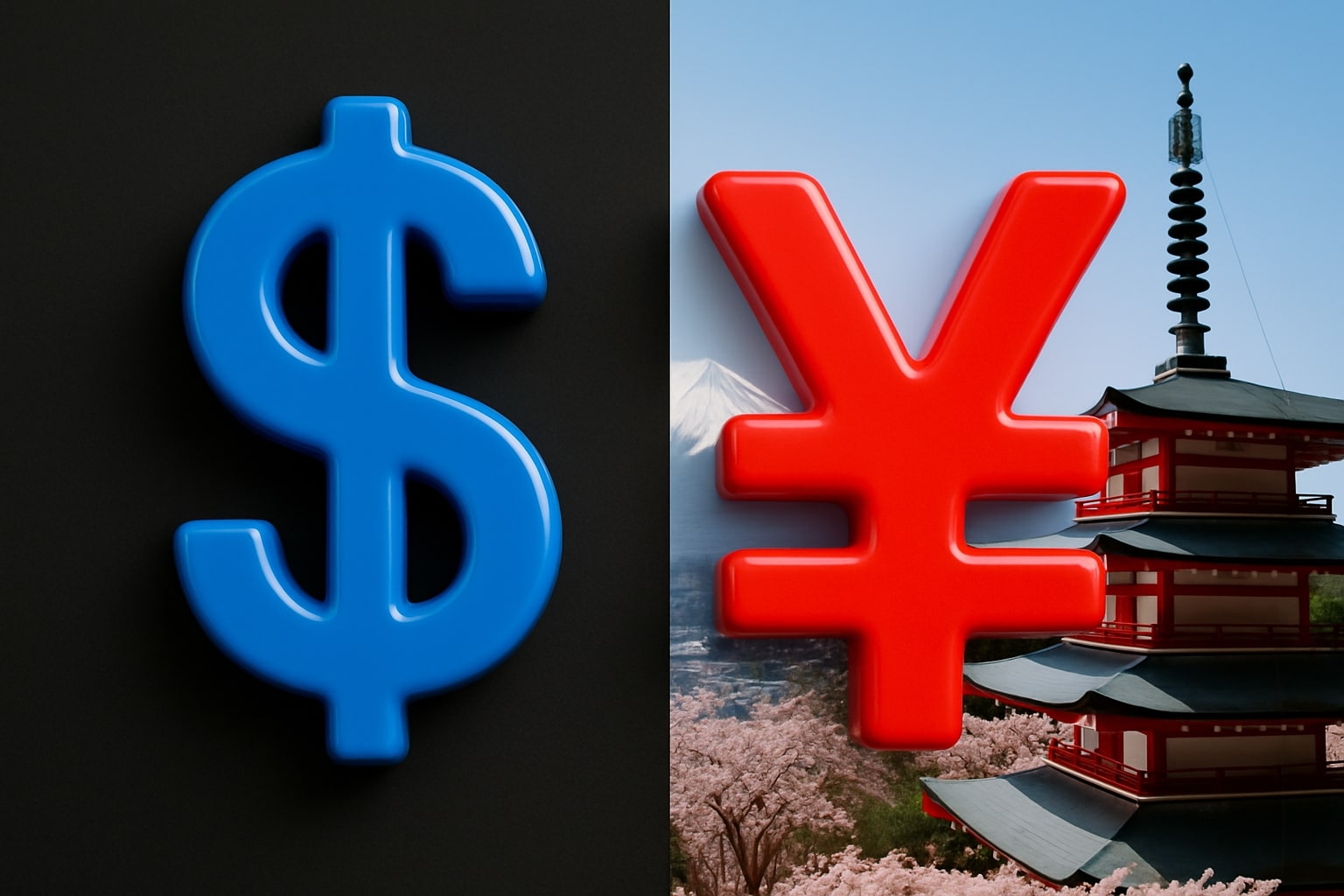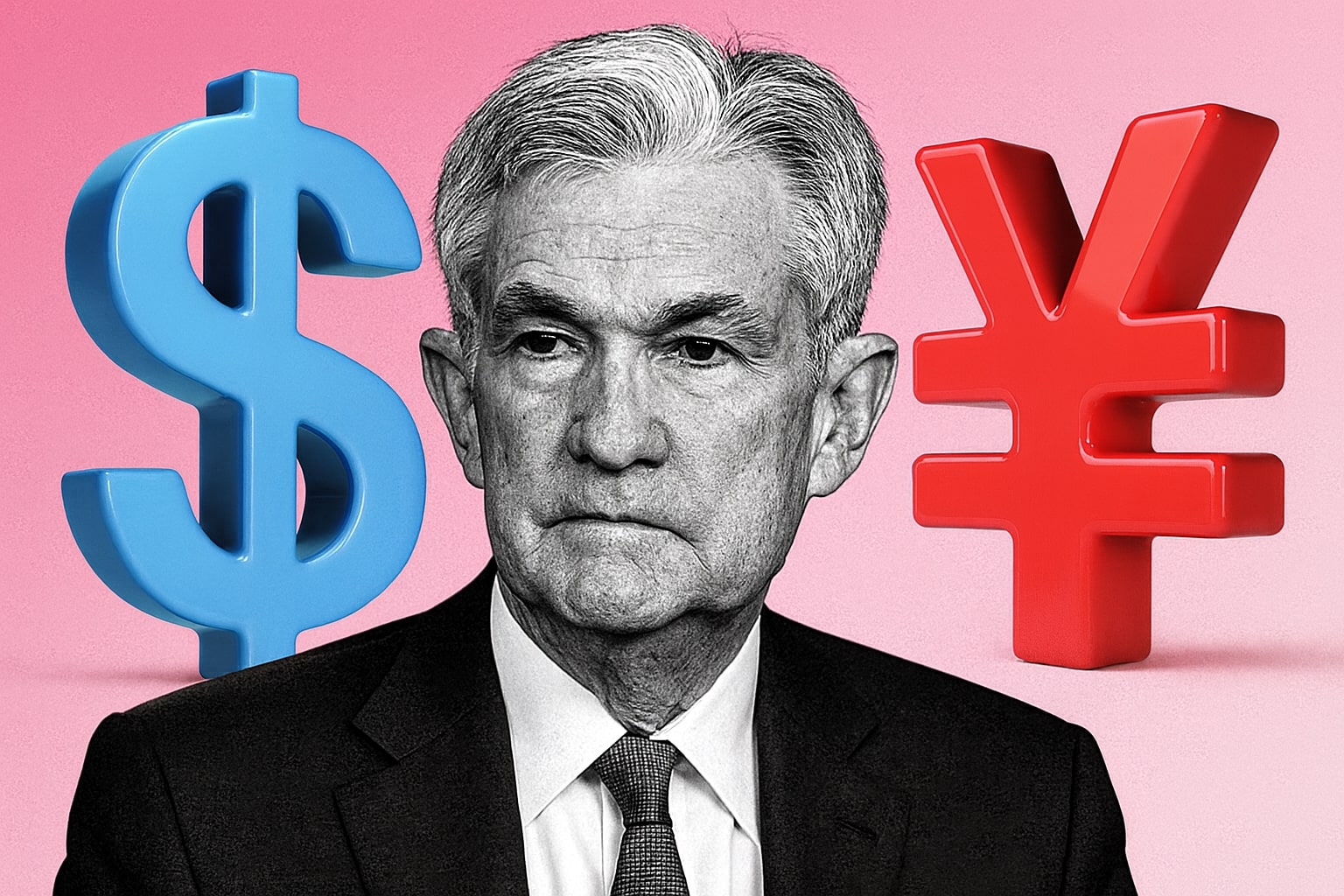
USD/JPY Price Forecast - Yen Holds Near 154 as Japan’s Massive $92B Stimulus
The Japanese yen (JPY) remains under pressure, with USD/JPY consolidating around 154.15 after a sharp rally from 151.50 | That's TradingNEWS
USD/JPY Holds Near 154 as Japan’s Stimulus Push, Fed Policy, and Intervention Risks Collide
USD/JPY trades around 154.15, consolidating near its eight-month highs as monetary policy divergence, Japanese fiscal expansion, and intervention threats define the pair’s November trajectory. The dollar’s climb from 151.50 to 154.45 reflects renewed confidence in the U.S. economy after ISM Manufacturing PMI data showed the eighth straight month of contraction at 48.7, but with resilience in new orders and prices paid at 58, reinforcing sticky inflation concerns. This keeps the Federal Reserve’s hawkish tone alive despite the latest 25-basis-point cut, which Chair Jerome Powell described as a “cautious recalibration,” not the start of an easing cycle. Markets have repriced sharply — the CME FedWatch Tool now shows only 65% odds of a December rate cut, down from 94% a week ago, helping the U.S. Dollar Index (DXY) hold near 99.83.
Policy Divergence Widens as Japan’s 13.9 Trillion Yen Stimulus Weakens the Yen
The Japanese yen (JPY) remains pinned near multi-month lows as new Prime Minister Sanae Takaichi finalizes a record 13.9 trillion yen ($92 billion) fiscal package to support households and counter inflation pressures. The stimulus, aimed at boosting consumption and offsetting energy costs, undermines near-term rate-hike expectations at the Bank of Japan (BoJ), which left its benchmark rate unchanged at 0.50% for a fifth consecutive meeting. Although Governor Kazuo Ueda reiterated readiness to tighten if wage growth strengthens, markets remain skeptical — pricing only a 50% probability of a 25-bps hike in December. The widening policy gap with the Fed continues to pressure the yen, as traders sell into every rebound.
Tokyo Inflation and Wages: The BoJ’s Tightrope Between Growth and Credibility
Tokyo’s inflation readings reinforced the BoJ’s dilemma. The city’s headline CPI rose to 2.8% in October from 2.5% in September, while “core-core” inflation (excluding food and energy) also climbed to 2.8%, suggesting underlying price stickiness. Yet Ueda’s cautious tone signaled patience — he said the BoJ must “take a little longer” to gauge how U.S. tariffs and Japan’s slower wage negotiations affect consumption. Average cash earnings data due November 6 are pivotal; a rebound could reignite expectations of a December hike, while weak wage growth would validate the BoJ’s dovish bias. Markets understand that unless wage momentum accelerates, tightening risks choking fragile demand.
Fed Resilience and U.S. Data Keep Dollar Bulls in Control
The U.S. dollar’s dominance stems from relative strength in labor and manufacturing data. Despite ISM weakness, S&P Global Manufacturing PMI improved to 52.5, indicating stabilization. Treasury yields remain elevated — the 10-year yield hovers at 4.31%, sustaining the dollar’s advantage against low-yielding currencies. Fed officials Lisa Cook and Mary Daly reiterated that inflation remains above target and policy should stay “restrictive,” a clear contrast to the BoJ’s patience. That divergence sustains the USD/JPY rally, particularly as Japanese investors continue favoring U.S. Treasuries for higher returns.
Technical Setup: Triangle Pattern Confirms 154–155 Range Expansion
Technically, USD/JPY has formed a narrow consolidation triangle above 154.00, typically a continuation pattern that favors further gains. The pair’s RSI at 63 reflects healthy bullish momentum, while MACD nears a bullish crossover on the daily chart. The upper boundary of the pattern lies near 154.45, the October 30 high, followed by the February 13 peak at 154.85 and a 127.2% Fibonacci extension target at 155.30. Immediate supports rest at 153.65 and 153.00–153.25, where previous resistance flipped to demand. A decisive break below 152.20 would mark the first bearish reversal since mid-October. However, momentum structure continues to favor retests of the 155 handle before any significant correction emerges.
Japanese Intervention Threat Looms as Yen Approaches 155 Level
Verbal intervention risk is rising. The Ministry of Finance (MoF) has reiterated concern over “disorderly yen moves,” historically a prelude to direct market action. Strategists estimate the 155–160 zone as the intervention red line, consistent with previous efforts that cost Tokyo over 9 trillion yen ($60 billion) in 2022. However, past interventions proved short-lived; structural forces — wide yield spreads and Japan’s current-account dynamics — quickly restored USD/JPY’s uptrend. Unless coordinated with global central banks, any intervention is likely to have only temporary effects.
Stimulus, Import Prices, and Energy Dependencies Add Complexity
Japan’s new fiscal stimulus introduces conflicting forces. While subsidies aim to cushion households, they also raise expectations of further government bond issuance, weakening yen sentiment as yields remain capped by BoJ yield-curve control (YCC). Meanwhile, a weaker yen inflates import prices, particularly energy and food. With WTI oil trading around $61.20 and Brent near $65.00, import bills are rising, adding inflation pressure that forces the BoJ to balance credibility and growth. Should yen depreciation push energy costs higher, political pressure on Ueda to tighten may intensify by year-end.
Global Context: Policy Divergence Across G7 Fuels Dollar Strength
Beyond Japan, global monetary dynamics support the dollar. The European Central Bank and Bank of England have turned dovish amid slowing growth, while the Fed remains focused on inflation control. The U.S. labor market, though cooling, still shows resilience — unemployment near 3.9% and job openings at 8.9 million keep consumption steady. The contrast with Japan’s sub-1% inflation-adjusted wage growth underscores why yield differentials persist. Until the BoJ signals concrete tightening, speculative positioning remains heavily skewed toward long USD/JPY, with net longs at a six-month high, according to the latest CFTC data.
Read More
-
SCHD ETF Price at $27: Can SCHD’s 4% Yield and 9.15% Dividend Growth Beat High-Yield Covered Call ETFs?
15.12.2025 · TradingNEWS ArchiveStocks
-
XRP ETFs Close on $1B Inflows as XRPI at $10.92 and XRPR at $15.52 Hit 52-Week Lows
15.12.2025 · TradingNEWS ArchiveCrypto
-
Natural Gas Price Forecast: NG=F Holds the $4 Floor as Oversupply Clashes with 2026 LNG Demand
15.12.2025 · TradingNEWS ArchiveCommodities
-
USD/JPY Price Forecast - Dollar to Yen At 155: Yen Strength Builds As BoJ Hike And NFP Collide
15.12.2025 · TradingNEWS ArchiveForex
Short-Term Catalysts: PMI Data, Wage Reports, and Fed Commentary
The week ahead brings critical catalysts. U.S. ISM Services PMI and ADP Employment Change will guide expectations for the December Fed meeting, while Japan’s Jibun Bank Manufacturing PMI and BoJ minutes could clarify policy leanings. A strong U.S. PMI rebound above 50 would propel USD/JPY toward 155, while soft wage growth in Japan could delay BoJ tightening to 2026. Conversely, stronger Japanese earnings could revive yen demand, possibly triggering a pullback toward 152.50–153.00.
Technical Bias and Market Sentiment Support the Bulls
Market positioning indicates resilience despite slight dollar fatigue post-ISM. The DXY’s intraday dip from 99.99 to 99.83 failed to break key support, showing limited downside appetite. The overall sentiment remains bullish as long as USD/JPY stays above 153.50. Momentum traders view the 154 area as a “launch zone” for renewed buying, while options markets price a 30% probability of a move above 155 before mid-November.
Verdict: BUY – Bullish Bias Toward 155.30 with Intervention Watch
Based on technical strength, macro divergence, and Japan’s fiscal stance, USD/JPY maintains a BUY bias. The near-term outlook favors continued strength toward 155.00–155.30, barring active Japanese intervention. Support lies at 153.00–153.50, offering re-entry potential for traders. Intervention risk grows beyond 155, but unless supported by BoJ rate action, pullbacks are expected to remain shallow. The pair’s multi-month bullish channel remains intact, reflecting the enduring gap between Fed restraint and Japan’s ultra-loose policy — a structure unlikely to change before the December BoJ meeting or the next U.S. labor data print.



















